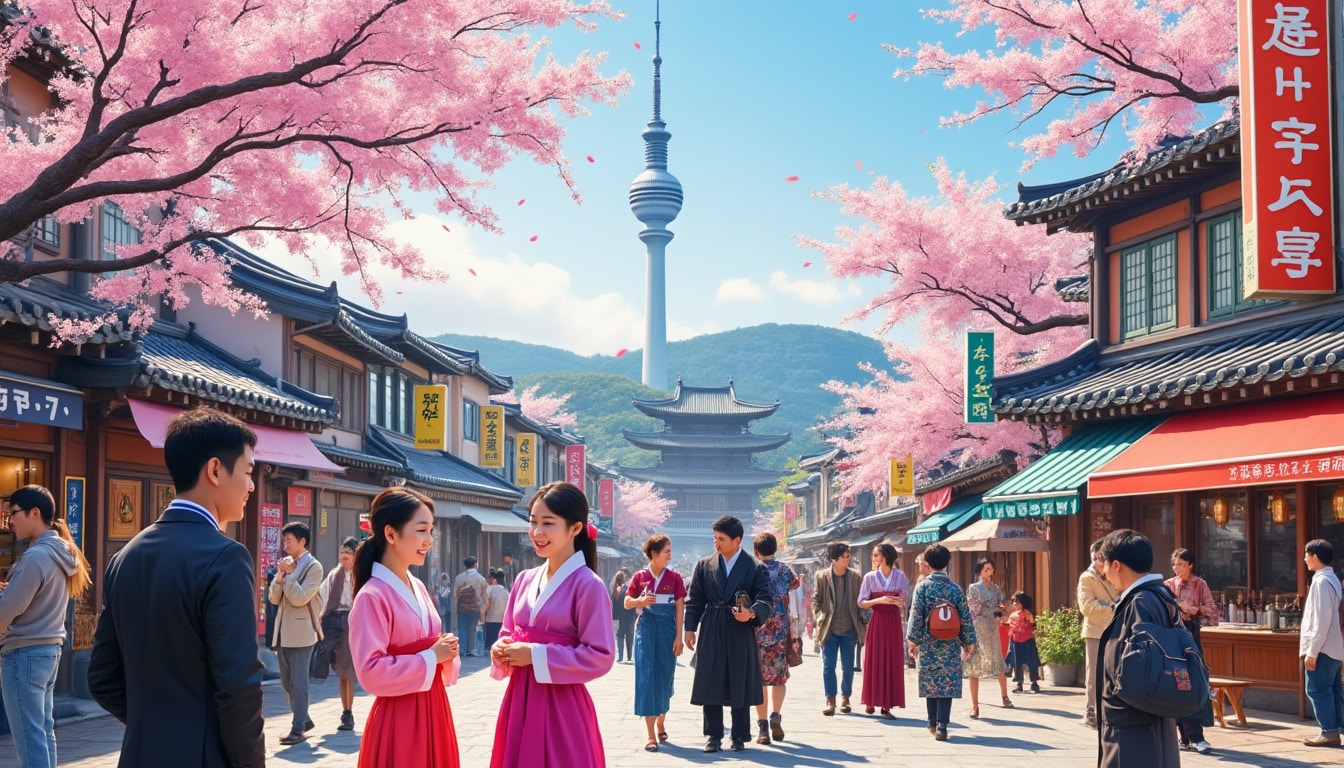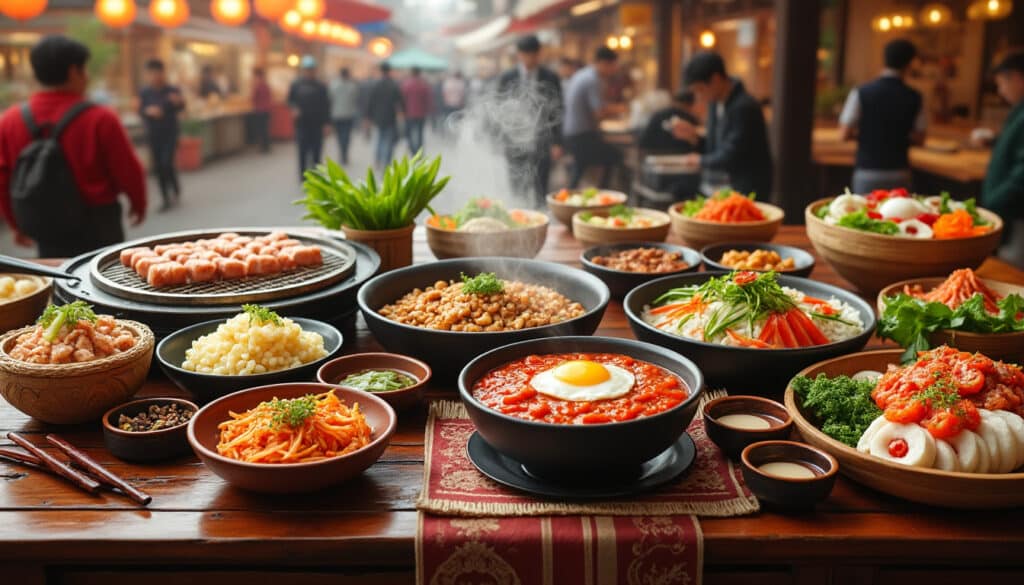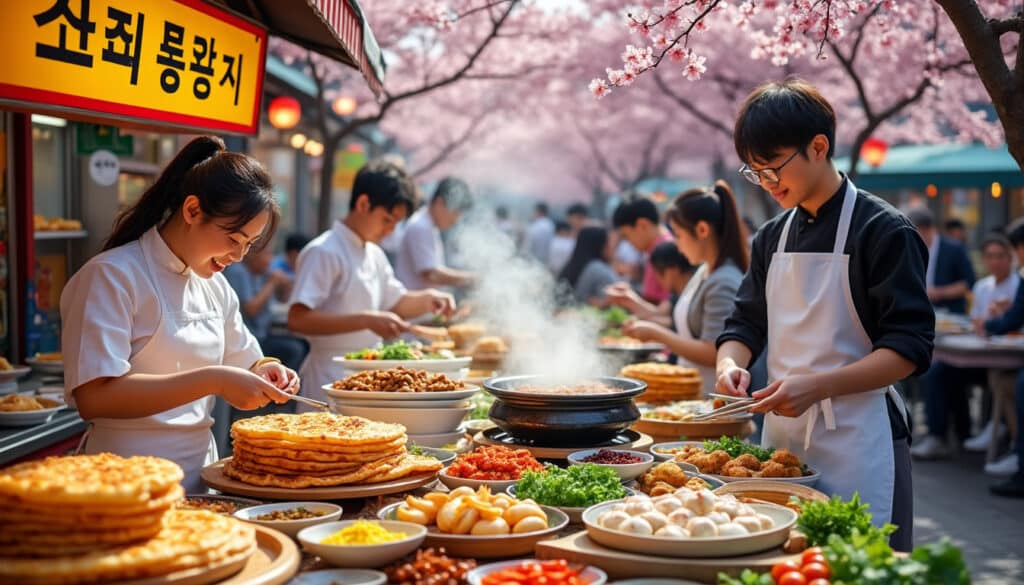Seoul, the bustling heart of South Korea, is a city where traditional culture meets modernity in a seamless blend. It’s a place where ancient palaces stand tall among high-tech skyscrapers. More than just a geographical focal point, Seoul is a linguistic tapestry woven from both historical roots and contemporary global influences. As such, the diversity of languages here reflects the city’s status as a lively metropolis on the global stage. Explore how multiple languages intermingle in South Korean life, creating a unique blend that is both traditionally Korean and cosmopolitan.
The Dominance of the Korean Language in Seoul
The Korean language, with its historical roots and practical use, is the primary language spoken throughout Seoul. Central to the understanding of the Korean linguistic landscape are several key features. At the forefront is Hangul, the phonetic alphabet introduced by King Sejong the Great in the 15th century. Hangul was designed with simplicity and accessibility in mind, enabling widespread literacy among ordinary citizens. Today, it remains a powerful symbol of Korean identity.
Hangul consists of 14 basic consonants and 10 vowels, which can be combined to form complex sounds. This phonemic script is praised for its scientific design and ease of learning. Apart from the alphabetical basics, there are 27 complex letters formed by combining these base characters. Despite the complexity, even beginners can grasp the fundamentals of Hangul in a short time, which may contribute to South Korea’s high literacy rate.
Seoul residents predominantly use the Seoul dialect, which acts as the standard form of the Korean language nationwide. It shares many characteristics with other regional dialects but serves as the primary medium in media and education further cementing its prominence. Given the internet’s vast reach, platforms like SeoulSpeak and FluentKorean provide resources for those eager to dive into this linguistic gateway to Korean culture.

The language isn’t just a tool for communication but a bridge that fosters cultural understanding. Platforms such as KoreanConnect and CulturalConverse highlight the dynamic between language use and cultural engagement. As globalization continues to seep into Seoul, the foundational Korean language will anchor the city’s residents while allowing them to participate fully in an interconnected world.
| Component | Explanation | Emoji |
|---|---|---|
| Hangul | The Korean Alphabet introduced in the 15th century | 📚 |
| Seoul Dialect | The standard dialect used across South Korea | 🗣️ |
| Literacy Rate | High literacy facilitated by easy accessibility to Hangul | 📖 |
English as a Lingua Franca in Seoul
The global surge in English proficiency has significantly impacted Seoul’s linguistic landscape. As South Korea continues to establish itself in the world economy, English has emerged as an essential communication tool. This trend is evident in many aspects of daily life and education within the city.
Various educational institutions have incorporated English into their curricula, often serving as a second language. The popularity of English is further buoyed by the country’s aim to prepare its citizens for participation in the international community, allowing students and professionals to engage in global dialogues effectively. Indeed, English is perceived not merely as a subject but as a crucial asset for career advancement, with numerous South Korean companies emphasizing bilingual capabilities.
The appeal of Seoul as a cosmopolitan hub results in a vibrant expatriate community. English-speaking foreigners have become an integral part of the city’s social fabric, resulting in a practical need for residents to speak English. Establishments such as SpeakSeoul and SeoulLingo institutions offer language courses to help bridge linguistic gaps, facilitating smoother interactions both socially and in business.
Public signage, menus, and transport directions are often available in both Korean and English, aiding non-Korean speakers in navigating the bustling metropolis. This bilingual approach makes Seoul an inviting city for international visitors, helping them feel more connected to the local environment.
English usage is also strongly represented online. Blogs, websites, and apps frequently deliver content in English to cater to a broader audience. This multilingual environment fosters exchange across diverse cultures, enriching the linguistic experience of locals and visitors alike.
- 📚 English integrated into school curriculums
- 🏢 Companies prioritize bilingual skills
- 🌐 Online content available in English
The Role of Chinese and Japanese in Seoul
Seoul’s linguistic diversity doesn’t stop at Korean and English. The city holds historical and economic ties with neighboring countries like China and Japan, influencing the languages spoken in daily life. Chinese is widely spoken due to robust trade relations and the surge in Chinese tourists each year.
Business districts in Seoul, such as the financial hub of Gangnam, see a significant demand for Mandarin speakers. Companies often engage in trade with Chinese partners, necessitating a multilingual workforce. Additionally, Korean schools offer Mandarin classes as part of their foreign language offerings, with many students embracing the language for its commercial and cultural significance.
Similarly, the Japanese language maintains a notable presence. South Korea and Japan’s shared history results in a rich exchange of cultural elements, including language. Japanese communities thrive in various neighborhoods across Seoul, fostering cultural events, festivals, and exchanges that attract native speakers and learners alike.
Language schools in Seoul, like LanguageBridge, cater to those interested in learning Chinese or Japanese. With highly skilled instructors, these centers encourage language acquisition as a gateway to understanding Korean culture’s broader context through the prism of its neighboring influences.
| Language | Usage Context | Emoji |
|---|---|---|
| Chinese | Commercial interactions, educational sectors | 🇨🇳 |
| Japanese | Cultural exchanges, festivals, business | 🇯🇵 |
Diverse Language Communities and Cultural Exchange
Seoul’s linguistic landscape is enriched by a multitude of language communities brought together by expatriates from various countries. This linguistic diversity thrives within the city, creating opportunities for cultural exchanges and inclusive communication.
The need for LinguaFinder platforms has grown, offering locals and foreigners alike tools to connect with various linguistic groups. This network promotes understanding and appreciation among different cultures, benefiting both expatriates and native South Koreans.
Language cafes, exchange workshops, and cultural events serve as crossroads where diverse linguistic communities converge. Such gatherings spark curiosity and authenticity, allowing individuals to learn a new language while experiencing its cultural facets firsthand.
Moreover, initiatives like SeoulLingo leverage technology to break new ground in language learning through innovative apps and online platforms. These digital platforms provide access to language resources aimed at bridging communication gaps across Seoul’s varied communities.
- 👥 Language exchange programs
- 🎉 Multicultural events
- 📱 Innovative language apps
The Future of Language Diversity in Seoul
As Seoul marches towards the future, language diversity is bound to expand further. The city remains at the forefront of integrating modern solutions with cultural traditions, presenting endless possibilities for linguistic exploration.
Technological advancements such as AI-driven translation tools and language-learning applications continue to evolve, opening up new frontiers for polyglots and language enthusiasts in Seoul. While preserving its rich cultural heritage, Seoul simultaneously embraces global languages, contributing to a more vibrant and interconnected global community.
Innovations like virtual reality language simulations and artificial intelligence-driven interaction platforms are on the horizon, promising to bring practical language solutions and exciting learning experiences to both locals and visitors.
In this dynamic metropolis, language is not just a means of communication; it is a bridge connecting hearts and minds across cultures. Through initiatives like LanguaKorea and LanguageBridge, Seoul sets an example for cities worldwide seeking to celebrate linguistic diversity while fostering a strong sense of community and inclusivity.
| Innovation | Impact | Emoji |
|---|---|---|
| AI-driven translations | Streamline language communication | 🤖 |
| Virtual reality simulations | Enhance language learning experiences | 🕶️ |
FAQ
- What is the primary language spoken in Seoul? Korean, specifically the Seoul dialect, is the primary language spoken in Seoul.
- How prevalent is English in Seoul? English is widely spoken and understood, especially among young people and in business settings.
- Are other languages spoken in Seoul? Yes, languages such as Chinese and Japanese are also spoken, reflecting Seoul’s diverse and multicultural community.
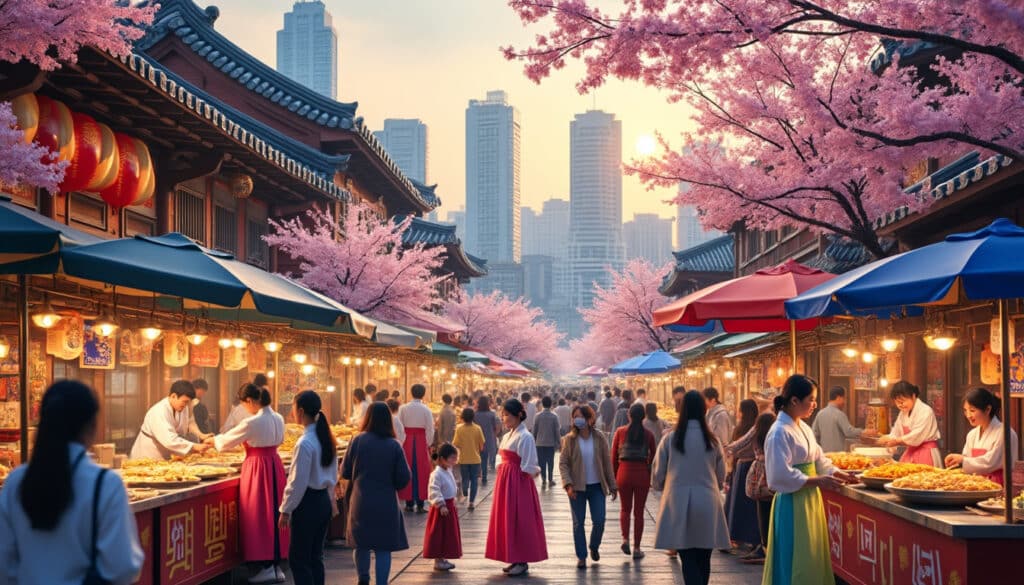
Seoul, an exhilarating blend of antiquity and innovation, is where skyscrapers and palaces coexist against the backdrop of vibrant street life. For newcomers and repeat visitors alike, the city offers a kaleidoscope of experiences that range from the rhythmic pulse…
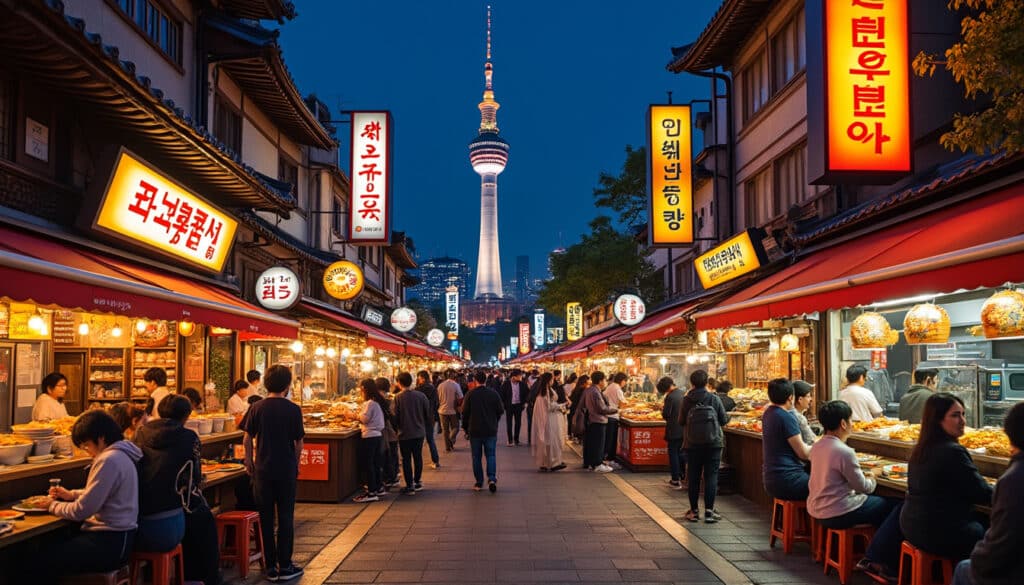
The culinary scene in Seoul is a thrilling journey that captivates both the locals and visitors yearning for genuine flavors and immersive experiences. As a city that perfectly juxtaposes tradition with avant-garde culinary innovation, Seoul boasts a vibrant food culture…
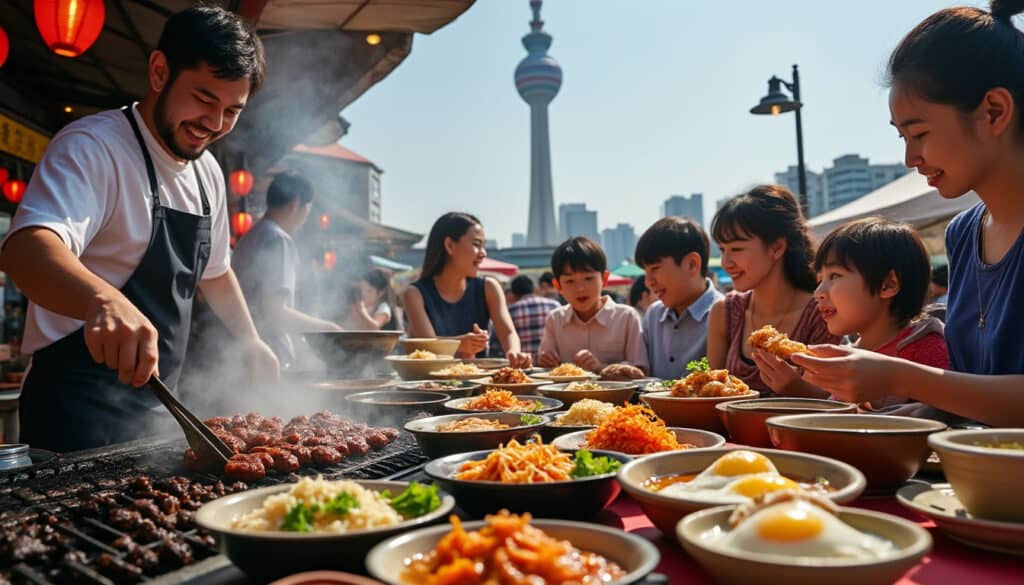
Seoul, a bustling metropolis of culture and gastronomy, offers a captivating glimpse into the culinary heartbeat of South Korea. Meal times here aren’t just about eating; they represent a deep-seated cultural practice, emphasizing family, tradition, and community. As visitors delve…
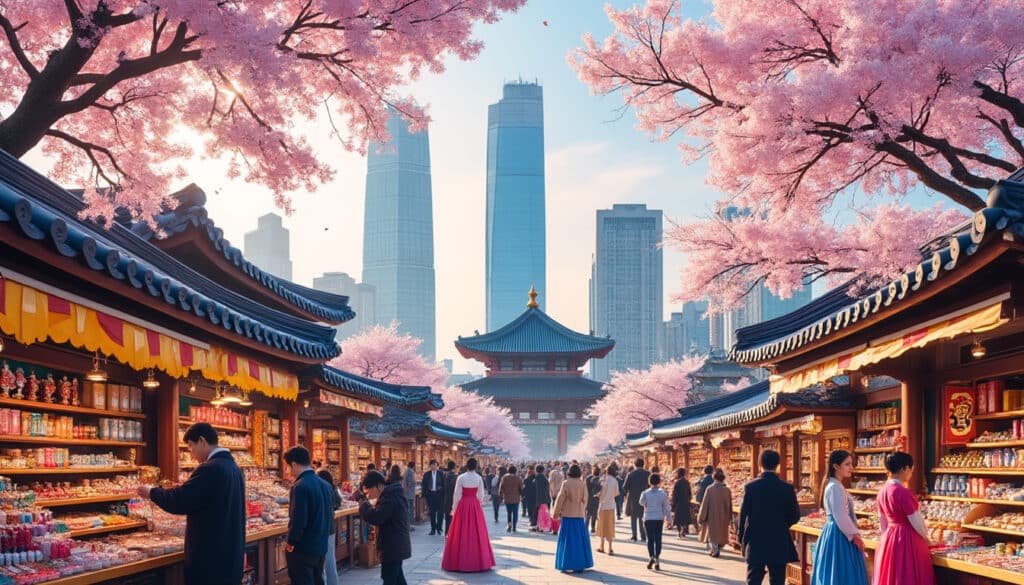
Souvenirs and shopping in Seoul
Seoul, a city where tradition melds seamlessly with modernity, offers a shopping experience like no other. This vibrant metropolis teems with life, culture, and an abundance of unique products that cater to the tastes of both its residents and its…

